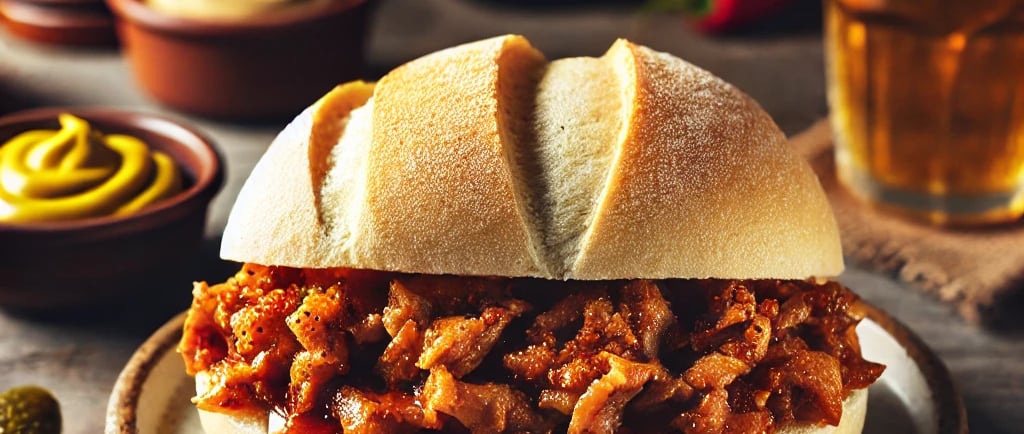Discover the Origins of the Portuguese Bifana
Explore the rich history of the Portuguese bifana sandwich, learn about its key ingredients, and uncover traditional preparations. Find out how to make bifana at home with our easy guide.
1/23/20251 min read


Origins of the Bifana Sandwich
The Bifana sandwich has deep roots in Portuguese culture, originating in the western regions of Portugal, particularly in the city of Viseu. This beloved sandwich is a staple of Portuguese street food and is well-loved by locals and tourists alike. It is said that the first Bifanas appeared in the late 20th century, created as a quick and hearty meal, making it a favorite for those on the go. The sandwich reflects the country's culinary heritage, combining flavors that have been refined over generations.
Preparation and Ingredients
At its core, a traditional Bifana sandwich consists of marinated pork, often made from thin slices of pork loin or shoulder. The marinade typically includes garlic, white wine, or vinegar, spices, and sometimes paprika, which infuses the meat with a delectable flavor profile that is both savory and slightly tangy. After marinating, the pork is traditionally sautéed in a skillet, resulting in juicy and tender meat. It is then served in a crusty bread roll, which is an essential part of the experience, providing a satisfying crunch with each bite.
The Bifana Sandwich Today
Today, the Bifana sandwich has evolved and become a beloved dish not only in Portugal but also in various Portuguese communities worldwide. Many street vendors and restaurants take pride in their own unique preparations, offering variations such as spicy Bifanas or adding toppings like mustard or piri-piri sauce for an extra kick. While the classic Bifana recipe remains a favorite, new iterations continue to emerge, showcasing the sandwich's versatility. Whether enjoyed at a local eatery or as a homemade dish, the Bifana sandwich embodies the spirit of Portuguese cuisine—delicious, simple, and celebratory.
